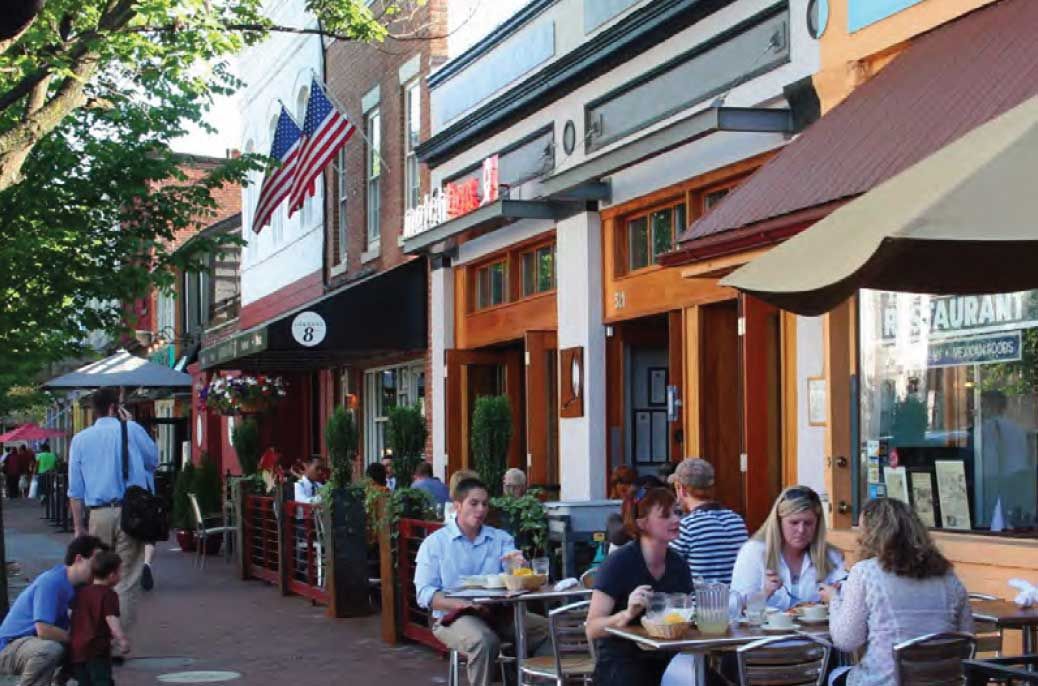Urban planning is the art and science of shaping the physical growth and management of cities. It is a discipline that influences nearly every aspect of our lives, from the roads we drive on to the parks where our children play. The world’s most successful cities are not the result of chance; they are a testament to the foresight and ingenuity of brilliant urban planners. These are the leading minds who envision a future where cities are not just dense population centers, but vibrant, sustainable, and equitable communities. They are the architects of our urban experience, tackling complex challenges like climate change, social equity, and economic development with innovative and holistic solutions.
This article will delve into the philosophies and groundbreaking work of some of the most influential urban planners in recent history and today. We will explore their key ideas, their most impactful projects, and the ways they have fundamentally changed how we think about city life. From historic figures who laid the groundwork for modern urbanism to contemporary thinkers who are redefining the city of the 21st century, these individuals are shaping our collective future, one neighborhood at a time.
Jane Jacobs

Jane Jacobs was not a professional urban planner by trade, but her influence on the field is immeasurable. A journalist and activist, she became a fierce critic of mid-20th-century urban renewal projects that prioritized large-scale, top-down development over the needs of local communities. Her seminal 1961 book, “The Death and Life of Great American Cities,” challenged the prevailing wisdom of planners like Robert Moses, who advocated for superhighways and housing projects that often destroyed vibrant, existing neighborhoods.
A. The Importance of Mixed-Use Development: Jacobs argued that a healthy city street is a complex, intricate tapestry of different uses. She championed mixed-use neighborhoods where residential buildings, small businesses, and parks are intertwined. This mix, she believed, creates a constant flow of people at different times of the day, making streets safer and more dynamic. She famously used her own Greenwich Village neighborhood as a prime example of this “ballet of the sidewalk.”
B. The Virtue of “Eyes on the Street”: One of Jacobs’s most enduring concepts is that of “eyes on the street.” She posited that public safety is not achieved through police presence alone, but through the continuous, informal surveillance of residents, shopkeepers, and pedestrians. When people feel a sense of ownership and connection to their street, they are more likely to look out for one another. This idea underscored her belief in the power of social capital and community cohesion.
C. Small Blocks and Short Streets: Jacobs was an advocate for short city blocks and a high density of streets. This design, she argued, encourages walking, makes it easier for people to interact, and creates a more permeable urban fabric. It stands in stark contrast to the large, isolated blocks favored by modernist planners, which she believed stifled social interaction and created a sterile environment.
Jan Gehl
Jan Gehl, a Danish architect and urban planner, has dedicated his career to creating cities for people, not cars. He is a key figure in the “human-scale” urbanism movement, which prioritizes walking, cycling, and public life. His work is rooted in a meticulous, empirical approach, using observations of human behavior to inform his design decisions. Gehl’s influence can be seen in cities across the globe, from Copenhagen to New York.
A. The Public Realm as a Priority: Gehl’s philosophy centers on the public realm—the streets, squares, and public spaces where city life unfolds. He argues that these spaces should be designed to be comfortable, safe, and inviting. His work often involves transforming car-centric streets into pedestrian-friendly zones and adding public seating, bike lanes, and green spaces to encourage people to linger and interact.
B. Data-Driven Urbanism: Gehl is famous for his detailed studies of how people use public spaces. He and his team have conducted extensive “people counting” exercises, documenting where people walk, sit, and stop to talk. This data provides a solid foundation for his designs, ensuring that new projects are based on the actual needs and behaviors of city residents.
C. The Copenhagen Model: Gehl’s work in his native Copenhagen is a prime example of his success. Over several decades, the city has systematically been transformed from a car-dominated city to a world leader in cycling and pedestrian-friendly design. This has not only improved public health and the environment but has also boosted the city’s social and economic vitality.
Andrés Duany & Elizabeth Plater-Zyberk
As co-founders of the urban design firm DPZ, Andrés Duany and Elizabeth Plater-Zyberk are the intellectual and professional leaders of the New Urbanism movement. This movement emerged in the 1980s as a reaction against the sprawling, car-dependent suburbs of the post-war era. New Urbanists advocate for a return to traditional neighborhood design principles, creating compact, walkable, and diverse communities.
A. The Principles of a Traditional Neighborhood: New Urbanism is based on a clear set of design principles. These include walkable neighborhoods, a mix of housing types and land uses, a strong sense of community and public space, and an emphasis on urban design that respects local history and climate. They believe that a well-designed neighborhood reduces the need for cars, fosters social interaction, and improves quality of life.
B. The Community of Seaside: The development of Seaside, Florida, is considered the quintessential example of a New Urbanist community. Designed by Duany and Plater-Zyberk in the 1980s, Seaside features a compact, gridded street plan, a variety of housing types, and a strong public core. The town’s success has influenced countless other developments and has proven the economic viability of New Urbanist principles.
C. The Charter of the New Urbanism: Duany and Plater-Zyberk were instrumental in the creation of the Charter of the New Urbanism, a foundational document that outlines the movement’s core principles. The charter calls for the reform of urban planning and development policies to rebuild cities and towns based on human-centric principles.
Enrique Peñalosa
As the former mayor of Bogotá, Colombia, Enrique Peñalosa is a global icon for his radical transformation of the city’s public realm. His philosophy is that a city’s quality of life is not measured by its wealth, but by how it treats its most vulnerable citizens. He is a passionate advocate for public transportation, cycling, and the creation of high-quality public spaces that are accessible to everyone.
A. The TransMilenio Bus Rapid Transit System: One of Peñalosa’s most celebrated achievements was the creation of the TransMilenio, a Bus Rapid Transit (BRT) system that has become a global model for public transportation. It uses dedicated bus lanes and high-capacity buses to move millions of people efficiently, offering a fast, affordable alternative to cars and significantly improving the city’s traffic and air quality.
B. The Ciclovía and Bike Paths: Peñalosa is a fervent supporter of cycling. He oversaw the construction of over 300 kilometers of protected bike paths and a weekly event called Ciclovía, where major city streets are closed to cars and opened to cyclists and pedestrians. This initiative has not only promoted a healthier lifestyle but has also fostered a strong sense of community and public life.
C. The Prioritization of Parks and Libraries: During his tenure, Peñalosa prioritized the creation of public parks, libraries, and schools in low-income neighborhoods. He believed that these spaces are crucial for promoting social equity and ensuring that all citizens, regardless of their economic status, have access to high-quality public amenities.
Jamie Lerner

A three-time mayor of Curitiba, Brazil, Jamie Lerner is considered one of the world’s most innovative urban planners. He is a proponent of “urban acupuncture,” the idea that a city can be transformed by small, precise, and strategic interventions that create a ripple effect. His work in Curitiba has made the city a global model for sustainable urban development.
A. The Curitiba BRT System: In the 1970s, Lerner pioneered the BRT system that later inspired Bogotá’s TransMilenio. He created a highly efficient and affordable public transportation system that prioritized buses over expensive and disruptive subway lines. The system’s innovative design, with tube-like stations that allow for quick boarding, has been emulated by cities worldwide.
B. The “24-Hour” Street and Pedestrianization: Lerner’s administration was known for its quick and decisive action. One of his most famous projects was the transformation of a major central street into a pedestrian-only zone in just 48 hours, preventing a planned highway from destroying the city center. This bold move created a vibrant public space and proved that urban transformation can be achieved quickly and effectively.
C. Garbage That Is Not Garbage: Lerner’s administration implemented a revolutionary recycling program called “Garbage That Is Not Garbage.” Residents could exchange their sorted waste for bus tokens, food, or school supplies. This ingenious program not only achieved a high recycling rate but also provided social and economic benefits to the city’s poorest citizens.
Conclusion
The leading minds in urban planning are not just architects of buildings; they are architects of a better society. Their work is a powerful testament to the idea that thoughtful, human-centered design can transform cities from places of congestion and inequality into vibrant, sustainable, and equitable communities. From Jane Jacobs’s defense of the organic, intricate life of the city street to Jan Gehl’s data-driven approach to public spaces, and from the New Urbanism of Duany and Plater-Zyberk to the transformative public projects of Peñalosa and Lerner, these innovators have provided us with a blueprint for a brighter urban future.
They have taught us that the greatest cities are those that prioritize people over cars, community over isolated blocks, and sustainability over unbridled growth. They have shown us that even in our most challenging moments—whether facing climate change, social division, or economic hardship—there are creative and practical solutions to be found in the way we design our living spaces. As the world becomes more urbanized, the lessons from these visionary planners become more critical than ever. The future of our cities lies in our ability to apply their principles, to create urban environments that are not only efficient and resilient but also inspiring and humane. The legacy of these leading minds is a living, breathing testament to the power of urban planning to shape our collective destiny and build a more beautiful world for generations to come.





